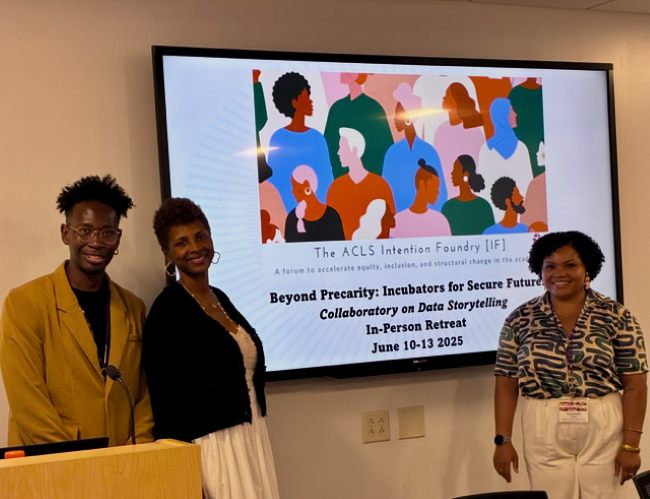 |
| Kenton Rambsy, Dana Williams, Keyanah Nurse |
By Kenton Rambsy
This summer, the IF retreat took place at Howard University from June 3 to June 5, 2025. The event marked the culmination of a semester-long virtual institute. Alongside my co-steering committee members, Marian Toledo Candelaria and Jennifer Gammage, I helped develop and facilitate a curriculum centered on data storytelling. As the data storytelling specialist in the Center for Applied Data Science and Analytics (CADSA) at Howard, I brought elements of our instructional model to the retreat. Our work showed what happens when social justice priorities align with technical training and critical thinking.
Howard’s endowment stands at just over one billion dollars, the highest among HBCUs. Yet even that amount falls far behind elite institutions like Harvard, which holds over fifty billion. Most HBCUs operate with endowments below fifty million. This activity helped participants see how data can illuminate underfunding, especially when presented in accessible and visual formats.
Two of my Black Data Lab interns at Howard supported the retreat as technical assistants. Cierra Larke, a recent graduate from our data science program, created a visualization that mapped endowments and enrollment numbers across all HBCUs. Emily Duru, a PhD student in English, designed a dashboard comparing top HBCUs with public and private PWIs.
In my opening remarks, I referenced the Supreme Court’s 2023 decision to end affirmative action. Justice Clarence Thomas, citing an NSF study, argued that HBCUs already produce a disproportionate number of Black judges, lawyers, and scientists. He framed that success as evidence that HBCUs do not need further support. His statement misreads the issue. Outcomes achieved under resource constraints should not be used to justify disinvestment.
The IF retreat demonstrated how data storytelling can clarify urgent problems and prepare scholars to engage broader publics. Howard provided a fitting setting for this work. We used the institute to cultivate technical fluency, historical awareness, and collective insight. It was a clear example of what becomes possible when equity-focused pedagogy meets the tools of data analysis.
Related:

No comments:
Post a Comment